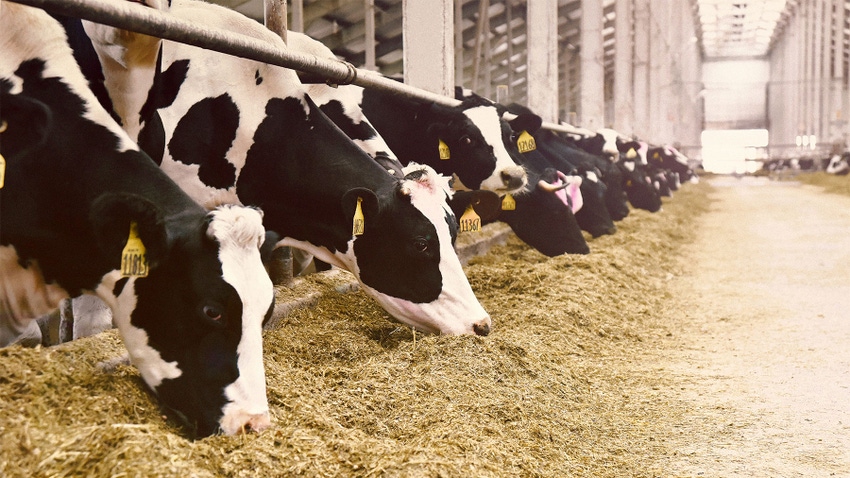
For more than two years, backyard flocks and the commercial poultry industry have been combating highly pathogenic avian influenza. Now, the virus has infected dairy cows in five states, including Michigan.
The Michigan Department of Agriculture and Rural Development (MDARD) announced March 29 that it had confirmed HPAI in a “large” Montcalm County commercial dairy operation of more than 500 cows, with about 10% testing positive for the virus.
USDA’s Animal and Plant Health Inspection Service confirmed cows in Texas, Kansas and Michigan were positive for the virus, and there were presumptive positive test results for additional herds in New Mexico and Idaho.
The Michigan herd, as well as the herds from Idaho and Kansas, had recently received cows from an infected Texas operation before the animals exhibited clinical signs of illness. It’s not known if infected birds transmitted the disease, or if it was then transmitted between cows. Animal health officials are investigating whether the virus was spread through milking equipment.
“We don’t know when the animals were initially exposed, but the first animals started to get ill March 20,” Michigan state veterinarian Dr. Nora Wineland says.
As part of the movement of animals across state lines, cows are required “to have a health certificate, be examined by a veterinarian and filled out,” she adds, while noting all paperwork was in order.
A preliminary diagnosis was made March 26, and “all movement was voluntarily stopped by the farm as they waited to find out what was going on,” Wineland says. “We’re fairly confident that there was not a lot of movement, if any, that happened to trace forward.”
Health certificates are always forwarded to the state of destination, and Michigan receives a high volume of these certificates on a daily basis, says Chelsea Lewis-Parisio, deputy public information officer for MDARD.
Symptoms of HPAI in cows include a drop in milk production, fever, abnormal milk and stiff manure, Lewis-Parisio says.
Officials have now looked at the whole genome sequence of the virus. The National Veterinary Service Lab has confirmed the H5N1 strain of influenza A in samples from Texas, Kansas and Michigan are similar and consistent with wild bird introductions. The lack of changes in the genome is good news, as it means it continues to be considered a low threat for mammals, Wineland says.
There have been only two human cases of HPAI in humans, one recently in Texas after exposure to dairy cattle presumed to be infected with HPAI, and another in Colorado in 2022 when an inmate contracted the virus during a work assignment with poultry, according to USDA.
Treatment for animals
HPAI-positive animals are being isolated in sick pens, potentially treated with antibiotics and fluids, while their milk is diverted from the supply chain, Wineland explains.
Cows sickened by HPAI have recovered "after isolation with little to no associated mortality reported," according to USDA. Wineland says it depends, but cows may recover after just a few days. However, all milk from cows treated with antibiotics is discarded for the prescribed period of time to ensure the antibiotics have cleared the milk.
USDA and MDARD officials say there is no concern with the safety of the commercial milk supply because products are pasteurized before entering the market. Pasteurization has continually proven to inactivate bacteria and viruses, such as influenza, in milk, says Tim Slawinski, director of Bureau of Food Safety and Animal Health for MDARD.
“There are measures in place to prevent this type of thing from being a threat to the supply, both at the farm level in terms of keeping milk from unhealthy cows out of the supply, but also at the processing level, where there is a pasteurization requirement both at the federal and state level,” Slawinski says. “It’s a heavily monitored process in keeping milk safe. We’re not aware of any situation where it’s passed through food to humans.”
HPAI in mammals
This is the first time the disease has been found in dairy cattle, according to the American Veterinary Medical Association — but it’s not the first mammal, as many wild animals have come down with the disease.
Michigan has had 11 red foxes with the disease, as well as a coyote and a raccoon. The last red fox recorded ill was in Alpena in June 2023, according to USDA.
Government officials say the risk to the public amid the current outbreak remains low.
Poultry producers, who have been heavily affected and are required to depopulate if the virus is detected, are bracing for the next seasonal migration of wild birds with its potential to spread to the domestic poultry. To date, more than 82 million birds have been affected with HPAI in 48 states.
About the Author(s)
You May Also Like






